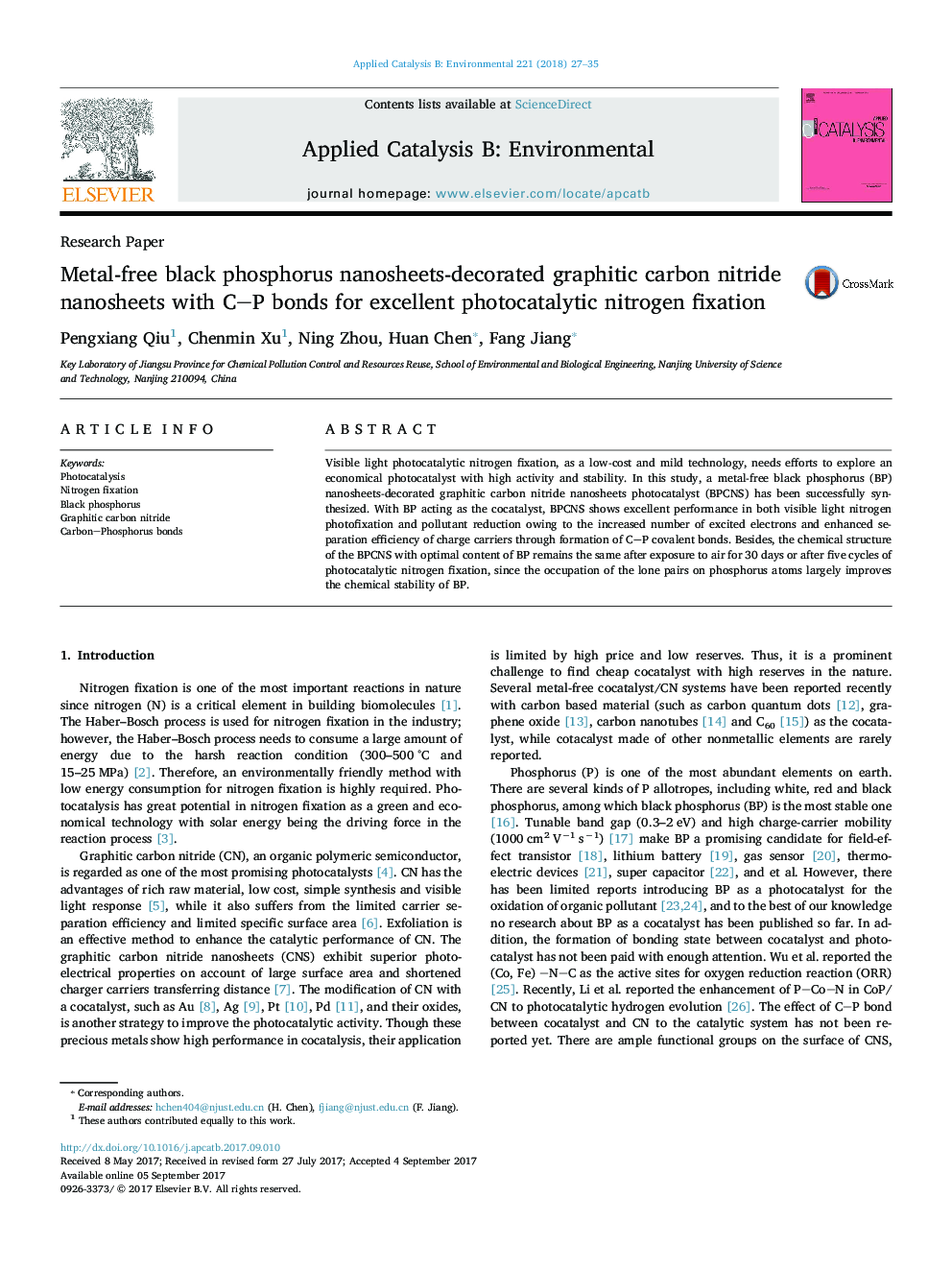| کد مقاله | کد نشریه | سال انتشار | مقاله انگلیسی | نسخه تمام متن |
|---|---|---|---|---|
| 6453389 | 1418799 | 2018 | 9 صفحه PDF | دانلود رایگان |
- Black Phosphorus (BP) was introduced as a cocatalyst for the first time.
- CP bonds were formed at the interface between BP and g-C3N4 nanosheets (CNS).
- The interfacial CP bonds improved the charge transfer and stability of BP.
- BPCNS exhibited higher visible-light nitrogen photofixation activity than Pt/CNS.
Visible light photocatalytic nitrogen fixation, as a low-cost and mild technology, needs efforts to explore an economical photocatalyst with high activity and stability. In this study, a metal-free black phosphorus (BP) nanosheets-decorated graphitic carbon nitride nanosheets photocatalyst (BPCNS) has been successfully synthesized. With BP acting as the cocatalyst, BPCNS shows excellent performance in both visible light nitrogen photofixation and pollutant reduction owing to the increased number of excited electrons and enhanced separation efficiency of charge carriers through formation of CP covalent bonds. Besides, the chemical structure of the BPCNS with optimal content of BP remains the same after exposure to air for 30Â days or after five cycles of photocatalytic nitrogen fixation, since the occupation of the lone pairs on phosphorus atoms largely improves the chemical stability of BP.
221
Journal: Applied Catalysis B: Environmental - Volume 221, February 2018, Pages 27-35
